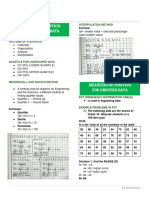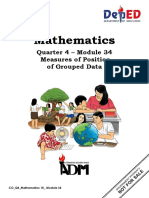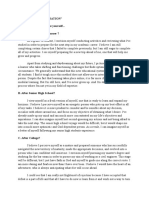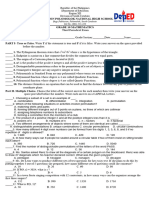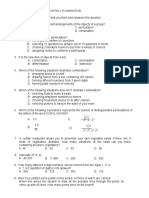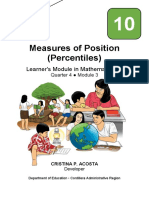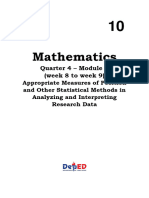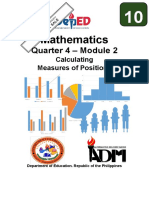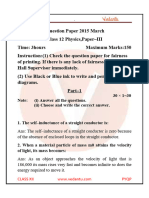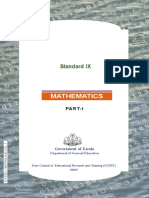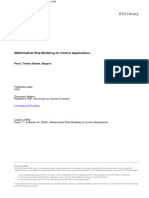0% found this document useful (0 votes)
2K views4 pagesGrade 10 Math Reviewer For 4th Quarter
The document discusses independent and dependent events, conditional probability, and measures of central tendency including quartiles, deciles, and percentiles. It provides examples of calculating these measures using data sets of test scores. For quartiles, deciles and percentiles it shows how to determine the class interval and cumulative frequency to find the value of the measure.
Uploaded by
Levi MallariCopyright
© © All Rights Reserved
We take content rights seriously. If you suspect this is your content, claim it here.
Available Formats
Download as DOCX, PDF, TXT or read online on Scribd
0% found this document useful (0 votes)
2K views4 pagesGrade 10 Math Reviewer For 4th Quarter
The document discusses independent and dependent events, conditional probability, and measures of central tendency including quartiles, deciles, and percentiles. It provides examples of calculating these measures using data sets of test scores. For quartiles, deciles and percentiles it shows how to determine the class interval and cumulative frequency to find the value of the measure.
Uploaded by
Levi MallariCopyright
© © All Rights Reserved
We take content rights seriously. If you suspect this is your content, claim it here.
Available Formats
Download as DOCX, PDF, TXT or read online on Scribd
/ 4


